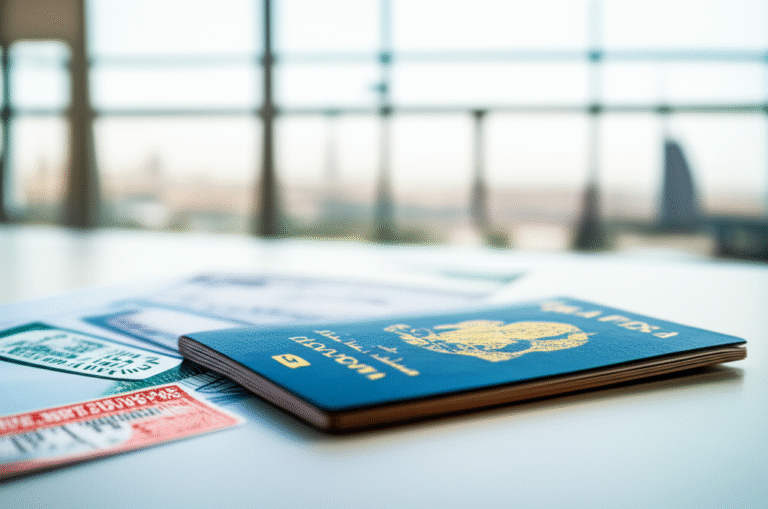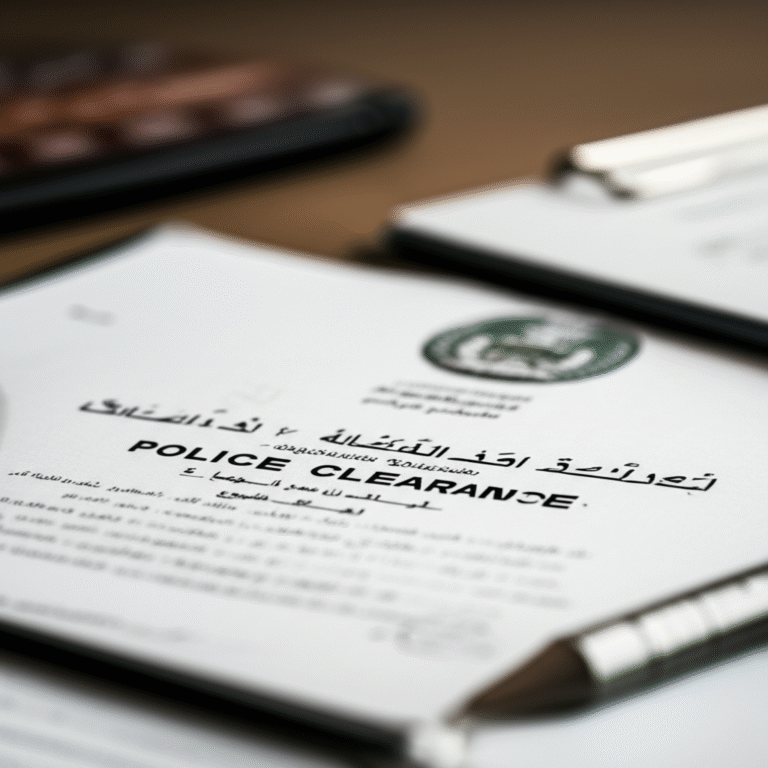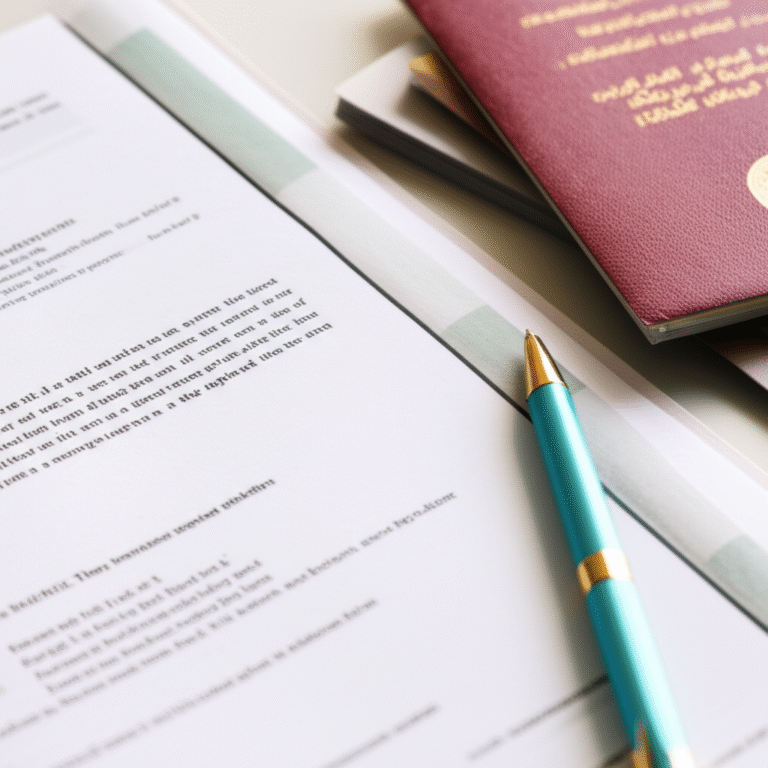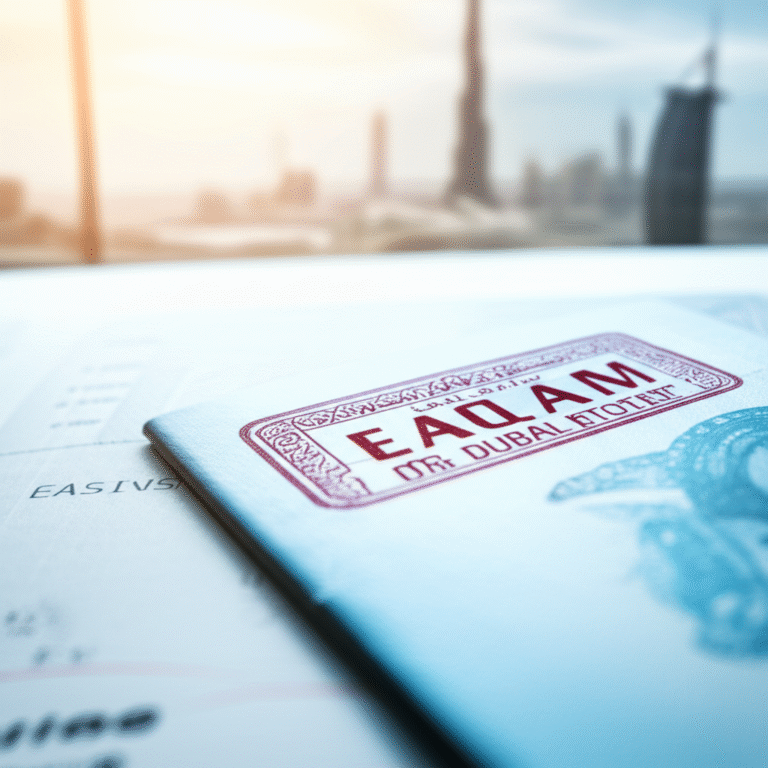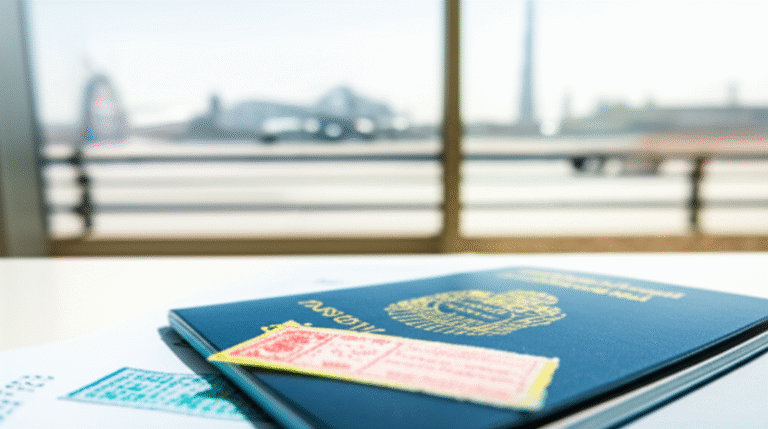How to Check Dubai Visa Rejection Reason
You can check your Dubai visa rejection reason through official channels like the Federal Authority for Identity, Citizenship, Customs & Port Security (ICP) website or by contacting the immigration authorities directly. Understanding the reason is crucial for reapplying.
Key Takeaways
Identify the Rejection Cause: Know common reasons for visa refusals.
Contact Official Channels: Use ICP or GDRFA platforms for clarity.
Gather Necessary Documents: Prepare for the appeal or reapplication.
Seek Professional Advice: Consult immigration specialists if needed.
Reapply Strategically: Address the specific refusal reason.
Stay Informed: Keep up-to-date with UAE immigration policies.
Dubai, a city synonymous with innovation and global connection, welcomes millions of visitors and residents each year. While the process of obtaining a Dubai visa is generally smooth, sometimes applications can face unexpected rejections. If your Dubai visa application has been refused, it’s natural to feel concerned. However, understanding why it happened is the first step towards a resolution. This guide will walk you through exactly how to check your Dubai visa rejection reason, making a potentially complex process clear and manageable. Let’s turn that uncertainty into a pathway forward.
Navigating Dubai Visa Rejection: Understanding the “Why”
Receiving a Dubai visa rejection can be a disheartening experience. The United Arab Emirates (UAE) has stringent immigration policies designed to ensure security and uphold the integrity of its visa system. These policies are constantly updated to reflect national priorities and global standards, showcasing Dubai’s commitment to order and efficient management. When a visa application is denied, it’s rarely arbitrary. There are specific grounds for rejection, and knowing these can empower you to address the issue effectively.
For many, the immediate question is: “How do I find out the exact reason for my visa rejection?” This is a common query, and thankfully, there are official avenues to uncover this vital information. Dubai’s progressive approach means that transparency, where possible within legal frameworks, is valued. This article will demystify the process, providing you with actionable steps and insights from a Dubai insider’s perspective. We’ll explore the official portals, understand what information you might receive, and what your next steps should be.
Common Reasons for Dubai Visa Rejection
Before diving into how to check the rejection reason, it’s helpful to be aware of the most frequent causes for visa denials. Understanding these can help you anticipate potential issues and ensure your future applications are more robust. Dubai’s immigration authorities are meticulous, so even minor oversights can lead to a rejection.
Here are some of the most common reasons for a Dubai visa rejection:
Incomplete or Incorrect Documentation: This is perhaps the most frequent cause. Missing documents, incorrectly filled forms, or documents that don’t meet specific formatting requirements (like passport expiry dates or photo specifications) can lead to an automatic rejection. Ensure all required paperwork is uploaded accurately and completely.
Insufficient Funds: Applicants must demonstrate they have sufficient financial resources to support themselves during their stay in the UAE. Bank statements showing a healthy balance are crucial. If your financial standing is deemed inadequate, your visa may be rejected.
Previous Overstay or Immigration Violations: If you have previously overstayed your visa in the UAE or any other GCC country, or have had any immigration-related issues in the past, this can significantly impact your current application. Dubai Police and immigration services maintain records of such violations.
Criminal Record: A past criminal conviction or involvement in any unlawful activities, even if committed outside the UAE, can lead to visa rejection. The UAE conducts thorough background checks.
Health Concerns: Certain communicable diseases may lead to visa rejection after mandatory medical examinations. The UAE prioritizes public health.
Unclear Purpose of Visit: If your stated reason for visiting Dubai is vague or seems inconsistent with the type of visa applied for, it might raise concerns for immigration officers. Be clear and honest about your intentions.
Sponsorship Issues: For certain visa types, like those sponsored by a company or an individual, any discrepancies or issues with the sponsor’s status or documentation can cause the applicant’s visa to be rejected.
Passport Validity: Your passport must be valid for at least six months beyond your intended stay in the UAE. Passports with shorter validity periods are a common reason for rejection.
Conflicting Information: Discrepancies between the information provided in your application form and supporting documents, or between different documents, can lead to suspicion and rejection.
Blacklisting: If you have been previously deported from the UAE or any GCC country, you might be blacklisted, making future visa applications impossible unless the ban is formally lifted.
How to Check Dubai Visa Rejection Reason: Step-by-Step
When your Dubai visa application is rejected, the relevant authorities usually provide a notification. However, this notification might not always explicitly state the detailed reason, especially for security-sensitive cases. The primary method to ascertain the specific reason involves engaging with the official government bodies responsible for visa processing and immigration.
The two main authorities you’ll interact with are the Federal Authority for Identity, Citizenship, Customs & Port Security (ICP) and the General Directorate of Residency and Foreigners Affairs (GDRFA). The specific entity depends on where and how you applied for your visa.
Method 1: Checking Through the ICP (Federal Authority for Identity, Citizenship, Customs & Port Security)
The ICP is a central authority for many immigration services in the UAE. If your visa application was processed through their online portals or a service center affiliated with them, this is likely your first port of call.
1. Visit the Official ICP Smart Services Portal:
Navigate to the official ICP website. Look for the “Smart Services” or “e-Services” section. The exact URL can change, so it’s best to search for “ICP UAE” or “ICA UAE Smart Services.”
You would typically look for a service related to “Visa Status Inquiry” or “Application Status.”
2. Login or Use the Guest Services:
If you have an account with ICP, log in using your credentials.
If not, many services allow inquiries using your application reference number and other personal details without requiring an account. Look for a “Guest Services” or “Inquiry” option for visa applications.
3. Enter Required Details:
You will likely need to provide your application reference number (also known as the file number or transaction number). This number is crucial and is usually provided at the time of application submission.
Other details might include your passport number, nationality, and date of birth to verify your identity and link you to the application.
4. Review the Status and Reason:
After entering the correct details, the system should display the current status of your application. If it has been rejected, the portal might provide a notification or a specific code and a brief explanation for the rejection.
Sometimes, the reason might be generic like “Entry Permit Rejected” or “Visa Application Refused.” If a specific reason isn’t immediately visible, you may need to proceed to the next steps.
Method 2: Checking Through GDRFA (General Directorate of Residency and Foreigners Affairs)
For applications processed through the GDRFA, especially in Dubai, this is the authority to contact.
1. Visit the GDRFA Website or Smart App:
Go to the official website of the General Directorate of Residency and Foreigners Affairs – Dubai (GDRFA-Dubai).
Alternatively, download the GDRFA Dubai smart app, which is available on both iOS and Android platforms. These apps are designed for user convenience and offer many services on the go.
2. Access the “Application Status” or “Inquiry” Service:
On the website or app, look for sections like “e-Services,” “Public Services,” or “Inquiry.”
Find the specific service for checking the status of your visa application or entry permit.
3. Provide Application Details:
Similar to the ICP portal, you will need to input your application reference number or file number.
Your passport number and nationality might also be required for verification.
4. View Rejection Notification:
The system will display the status. If rejected, it may offer a reason or a code indicating the grounds for refusal.
Method 3: Contacting the Issuing Authority or Their Representative
If the online portals do not provide a clear explanation, or if you applied through a travel agency or sponsor, you may need to take a more direct approach.
Contact Your Sponsor or Recruiting Agency: If your visa was sponsored by a company in Dubai or you applied through a registered travel agent, they often have direct communication channels with the immigration authorities. They can inquire on your behalf and relay the reason for rejection.
Visit an ICP or GDRFA Customer Service Center: In some cases, visiting a physical service center might be necessary. Be prepared to wait and bring all relevant documents, including your passport and application reference. They may be able to provide more specific details in person.
Call the Official Helpline: Both ICP and GDRFA may have official customer service hotlines. You can call these numbers to inquire about your application status and the reason for rejection. Be patient, as wait times can be long.
ICP Contact: Often accessible through the UAE government’s unified contact center or specific ICP helplines listed on their website.
GDRFA Dubai Contact: Check the official GDRFA Dubai website for their customer service contact details.
What to Expect When Checking the Rejection Reason
It’s important to manage expectations regarding the information you will receive. Dubai’s immigration system is designed for efficiency and security.
Limited Detail: For security reasons, detailed explanations are not always provided, especially for rejections related to security concerns or potential risks. You might receive a general reason or a specific code that requires interpretation.
Codes and References: Sometimes, the rejection notice might contain a specific code. You might need to cross-reference this code with official documentation or inquire further through customer service to understand its meaning.
No Direct Appeal on the Portal: While you can check the status and reason online, directly appealing a rejection through these portals is usually not possible. The next steps typically involve a formal appeal process or reapplying.
Provisional vs. Final Rejection
It’s worth noting that sometimes, an application might be put on hold or require further review rather than an outright rejection. Understanding the exact status is key. A “rejection” implies a final refusal, while other statuses might indicate a pending decision or a request for additional information.
Understanding the Impact: Rejection Codes and Their Implications
When checking your Dubai visa rejection reason, you might encounter specific codes or brief descriptions that require further understanding. These are part of Dubai’s systematic approach to managing immigration. While the exact codes and their meanings can evolve, here’s a general understanding of what some might signify and their implications.
The Federal Authority for Identity, Citizenship, Customs & Port Security (ICP) and the General Directorate of Residency and Foreigners Affairs (GDRFA) use internal systems that categorize reasons for visa denials. These categories help in tracking trends and ensuring consistent application of immigration laws.
Common Rejection Codes and Categories
While official, comprehensive public lists of all rejection codes are rare due to security and policy reasons, based on common scenarios and official guidance, we can infer the likely categories behind such codes:
| Potential Reason Category | Possible Code/Description Indicator | Implications for Applicant |
| :——————————— | :—————————————————————– | :———————————————————————————————————————————————————————————————————————————————————————————————————————————————————– |
| Documentation Deficiency | “Incomplete Application,” “Missing Documents,” “Invalid Document” | The most straightforward rejections. Requires resubmitting the application with all required documents correctly filled and attached. Ensure passport validity, photos, and all supporting papers meet the latest UAE immigration standards. |
| Financial Insufficiency | “Insufficient Financial Means,” “Low Bank Balance” | Demonstrates the applicant cannot financially support their stay. May require providing updated bank statements, a sponsor’s financial guarantee, or a higher balance. Reapplication should include strong evidence of financial stability. |
| Health Grounds | “Medical Rejection,” “Unfit for Residency” | Typically relates to the mandatory medical fitness test. Certain communicable diseases or conditions can lead to rejection. Inquests into specific health requirements or a specialist medical opinion might be necessary for a future application if the condition is treatable. |
| Security Concerns | “Security Cleared,” “Adverse Security Report,” “Blacklisted” | This is a broad category and often the least transparent. It can include past immigration violations, criminal records (even minor ones or those deemed serious by UAE authorities), or associations that raise security flags. Reapplications in such cases can be challenging and often require legal intervention or clarification from immigration. |
| Previous Immigration Violations | “Overstay Penalty,” “Previous Deportation,” “Entry Ban” | If you have overstayed a visa in the UAE or another GCC country, or were previously deported, you may face an entry ban. The duration of the ban varies. You may need to appeal to lift the ban or wait for its expiry. Consulting an immigration lawyer is highly recommended. |
| Inconsistent Information | “Discrepancy in Details,” “Conflicting Information Provided” | Indicates that the details provided in the application form did not match supporting documents or personal records. Requires careful review of all submitted information for accuracy and consistency before reapplying. |
| Sponsorship Issues | “Sponsor Not Valid,” “Incorrect Sponsorship Details” | Relates to the eligibility or documentation of the person or company sponsoring the visa. The sponsor must re-verify their details and ensure compliance with GDRFA/ICP regulations for sponsorship. |
| Purpose of Visit Uncertainty | “Unclear Intent,” “Ambiguous Travel Purpose” | The stated reason for the visit does not align with the visa type or raises doubts for immigration officials. A clearer, more detailed itinerary and purpose statement, along with supporting evidence (e.g., hotel bookings, event tickets), may be needed. |
Pro Tip: Always keep copies of all submitted documents and any communication received from the immigration authorities. This forms your documentation trail and is invaluable for understanding the rejection and planning your next steps.
How to Interpret a Rejection Code
If you receive a code, your best course of action is to:
1. Check the ICP or GDRFA Website: They may have a section explaining common codes or provide contact information for clarification.
2. Contact Customer Service: Call the official helplines and provide the code. While they might not always give a detailed explanation, they can often confirm the general category of rejection.
3. Consult a Visa Agency or Immigration Lawyer: If the reason remains unclear or seems unfair, a professional can help interpret the code and advise on the best course of action. They are familiar with the nuances of UAE immigration law and can often facilitate communication with the authorities.
Understanding these codes is a critical part of “how to check Dubai visa rejection reason” effectively, as it guides your strategy for reapplying or appealing.
Reapplication Strategy After Visa Rejection
A visa rejection is not necessarily the end of your journey to Dubai. With appropriate steps, you can often overcome the obstacles and successfully obtain a visa. The key is to thoroughly understand the reason for rejection and address it directly in your new application.
Step 1: Analyze the Rejection Reason Thoroughly
This is the most critical step. Don’t just note the reason; dissect it.
If Documentation Was the Issue: Review every single document you submitted. Check expiry dates, ensure signatures are present where required, and verify that all copies are clear and legible. Make sure you’ve met all the specific requirements for your visa type (e.g., photo dimensions, format of bank statements).
If Financial Proof Was Lacking: Prepare more robust financial evidence. This could include:
Bank statements showing a higher average balance over the last 3-6 months.
A letter from your employer stating your salary.
A sponsorship letter from a family member or company, along with their financial documents.
If There Was a Health Issue: Consult with a medical professional. Understand the condition and if it’s treatable. If the rejection was based on a specific, persistent condition, understand the UAE’s policies regarding that condition.
If Security Concerns or Past Violations Were Cited: This is the most complex scenario.
Entry Ban: If you have an entry ban, determine its duration and whether it can be lifted. This often requires contacting the relevant authorities (ICP or GDRFA) directly or through a legal representative.
Criminal Record: If a past conviction is the issue, you may need to provide documentation proving rehabilitation or obtain clearance from the relevant authorities in your home country.
Unclear Security Issues: For vague security reasons, it’s often best to seek professional legal advice from an immigration lawyer specializing in UAE cases. They can sometimes help clarify the issue or prepare a strong appeal.
If Sponsorship Was Problematic: Ensure the sponsor has addressed any issues with their own visa, employment status, or documentation. They might need to re-submit updated sponsor documents.
Step 2: Consider the Appeal Process vs. Reapplication
Appeal: In some cases, you have the right to appeal a visa rejection. The process and success rate vary greatly depending on the reason for rejection. Appeals usually require submitting a formal request with supporting evidence and fees. This is often a more formal and lengthy process.
Reapplication: For many common reasons (like missing documents or insufficient funds), reapplying after correcting the issue is more straightforward. You will typically start a new visa application process from scratch.
You can check the specific procedures for appeals or reapplication on the ICP or GDRFA websites.
Step 3: Choose the Right Visa Type and Sponsor (If Applicable)
Match Visa to Purpose: Ensure the visa type you are applying for accurately reflects your intended activities in Dubai. Applying for the wrong visa is a common mistake.
Reliable Sponsor: If you need a sponsor (e.g., for a work visa or a family visa), ensure they are reputable and have a good standing with immigration authorities. A sponsor with a history of compliance issues can negatively impact your application.
Step 4: Gather All Required Documents Meticulously
This goes without saying, but double-check everything.
Use the latest checklists provided by the ICP or GDRFA.
Ensure all documents are translated into Arabic if required, and attested by the relevant authorities.
Pay close attention to passport-style photo requirements, as these are very specific.
Step 5: Seek Professional Assistance
For complex rejections or if you are unsure about the process, it is highly recommended to consult:
Registered Visa Agencies: Many agencies in Dubai are authorized to help with visa applications and can guide you through the process, especially after a rejection.
Immigration Lawyers: For serious issues like entry bans or security concerns, an experienced immigration lawyer can provide invaluable assistance and representation.
If you are wondering “how to check Dubai visa rejection reason” and then proceed, a strategic approach is key. By addressing the specific cause of the rejection with meticulous attention to detail and utilizing official channels or professional help, you significantly increase your chances of a successful outcome.
Dubai’s Digital Transformation in Visa Services
Dubai’s commitment to becoming a smart city is evident in its advanced digital services, including visa processing. The government has invested heavily in technology to streamline government interactions, making services more accessible, efficient, and transparent. This digital transformation plays a crucial role even when dealing with visa rejections.
The Federal Authority for Identity, Citizenship, Customs & Port Security (ICP) and the General Directorate of Residency and Foreigners Affairs (GDRFA) are at the forefront of this digital push. They offer comprehensive online platforms and smart applications where individuals can manage their visa applications, check statuses, and, in some cases, retrieve information about rejections.
The Role of ICP and GDRFA Smart Services
Online Portals: Websites like the ICP’s Smart Services Portal and the GDRFA-Dubai’s portal are designed to be user-friendly. They allow applicants to initiate, track, and manage various immigration-related transactions from anywhere in the world. This digital-first approach ensures that even checking a rejection reason can be done remotely.
Mobile Applications: The GDRFA Dubai app and similar platforms provide a mobile-first experience. When you need to check your Dubai visa rejection reason, you can often do so quickly through your smartphone, receiving notifications and updates in real-time.
Data Integration: These systems are often integrated, meaning information can be accessed or verified across different government entities. This allows for thorough screening of applications and helps in providing a more consistent decision-making process, although the specific reasons for rejection might still be communicated at different levels of detail.
Efficiency and Transparency: The digital infrastructure aims to reduce paperwork and manual intervention, thereby speeding up processes and enhancing transparency. While a rejection can be frustrating, the ability to check its status and potentially the reason online reflects Dubai’s commitment to modern governance.
Impact on Checking Rejection Reasons
The digital nature of visa services means that most information regarding your application, including rejections, will first be available through these online channels.
Immediate Status Updates: If your application is rejected, the status on the ICP or GDRFA portal will typically update promptly.
Digital Notifications: Applicants may receive email or app notifications about their application status changes.
Secure Access: These platforms use secure login procedures, ensuring that only the applicant or their authorized representative can access sensitive information.
Limitations and Human Intervention
Despite the advanced digital systems, there are instances where digital channels might have limitations in providing detailed explanations, particularly for complex cases.
Vague Explanations: Online systems might provide a generic reason or a code that requires further interpretation.
Need for Human Assistance: For cases involving security concerns, complex immigration history, or when a detailed explanation is needed for reapplying, direct contact with customer service representatives or visiting a service center may still be necessary. These platforms are designed to complement, not entirely replace, human interaction for complex queries.
Dubai’s focus on technological advancement ensures that even procedural aspects like checking a visa rejection reason are as smooth and efficient as possible, reflecting the city’s vision for a connected and smart future.
Frequently Asked Questions (FAQ)
Q1: How long does it take to find out if my visa is rejected?
The time frame can vary. You will typically be notified of the decision within the standard processing time for your visa type, which can range from a few days to a couple of weeks. If you haven’t heard back within the expected timeframe, you can use the online status check tools.
Q2: Can I check the rejection reason for a family member’s visa?
Yes, if you are the sponsor or have been authorized to act on their behalf, you can usually check the visa status using the application reference number and other required details. However, specific privacy regulations might apply, and you may need to provide proof of authorization.
Q3: What should I do if my visa is rejected for security reasons?
Visa rejections due to security concerns are complex. It is highly recommended to consult with an experienced immigration lawyer specializing in UAE cases. They can help you understand the implications and explore potential options, which might include appealing the decision or seeking clarification from the authorities.
Q4: Is there a fee to check the reason for a Dubai visa rejection?
Checking the status and basic reason for rejection through the official ICP or GDRFA online portals or apps is generally free of charge. However, if you submit a formal appeal, there might be associated government fees.
Q5: Can I reapply for a Dubai visa immediately after rejection?
Yes, you can generally reapply for a Dubai visa after a rejection. However, it is crucial to understand the reason for the initial rejection and address it thoroughly in your new application. Reapplying without addressing the underlying issue is likely to result in another rejection.
Q6: What if I applied through a travel agent and my visa was rejected?
If you used a travel agent, they are your primary point of contact. They should be able to inquire about the rejection reason with the immigration authorities on your behalf and advise you on the next steps, whether it’s reapplying or pursuing an appeal.
Q7: Can a rejected visa affect future travel to other GCC countries?
Yes, depending on the reason for rejection. If the rejection was due to serious issues like overstaying, deportation, or certain security concerns, this information is often shared among GCC countries, potentially affecting your ability to obtain visas for other member states like Saudi Arabia, Qatar, Oman, Bahrain, and Kuwait.
Conclusion
Navigating the process of checking a Dubai visa rejection reason can seem daunting, but by approaching it with clarity and utilizing the official channels, it becomes a manageable step towards your travel or residency goals. Dubai’s commitment to modernization, reflected in its efficient digital services and structured immigration policies, aims to facilitate smooth processes for all.
Remember, a rejection is seldom a final dead end. It is an opportunity to review your application, understand the specific requirements, and prepare a stronger case for your next attempt. By staying informed about common rejection grounds, utilizing the online portals of ICP and GDRFA for status checks, and seeking professional advice when necessary, you are well-equipped to understand why your visa was rejected and how to move forward. Dubai continues to be a city of opportunity, and with the right approach, you can still be a part of its dynamic landscape.

